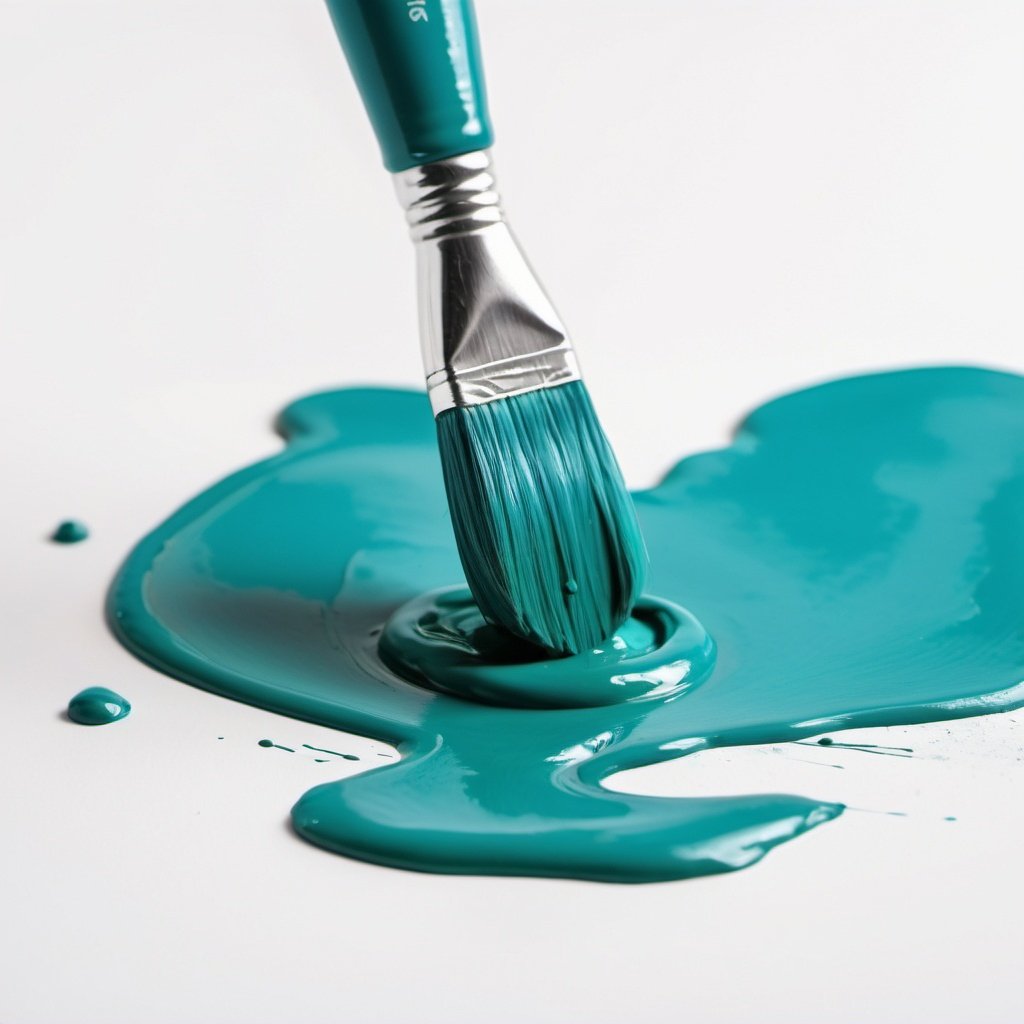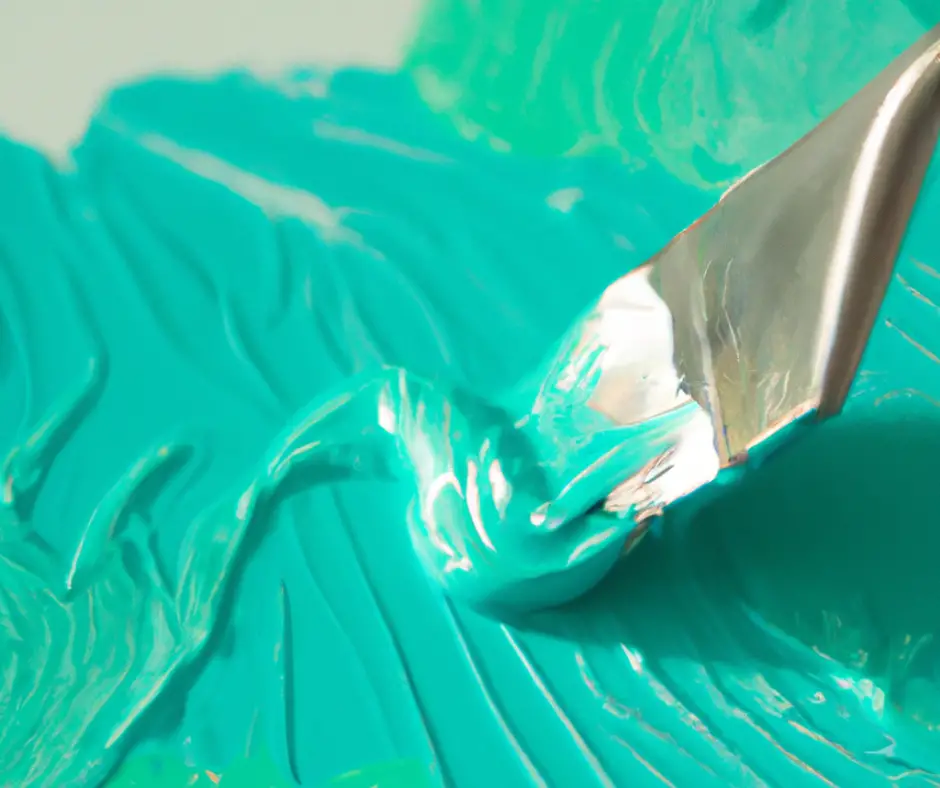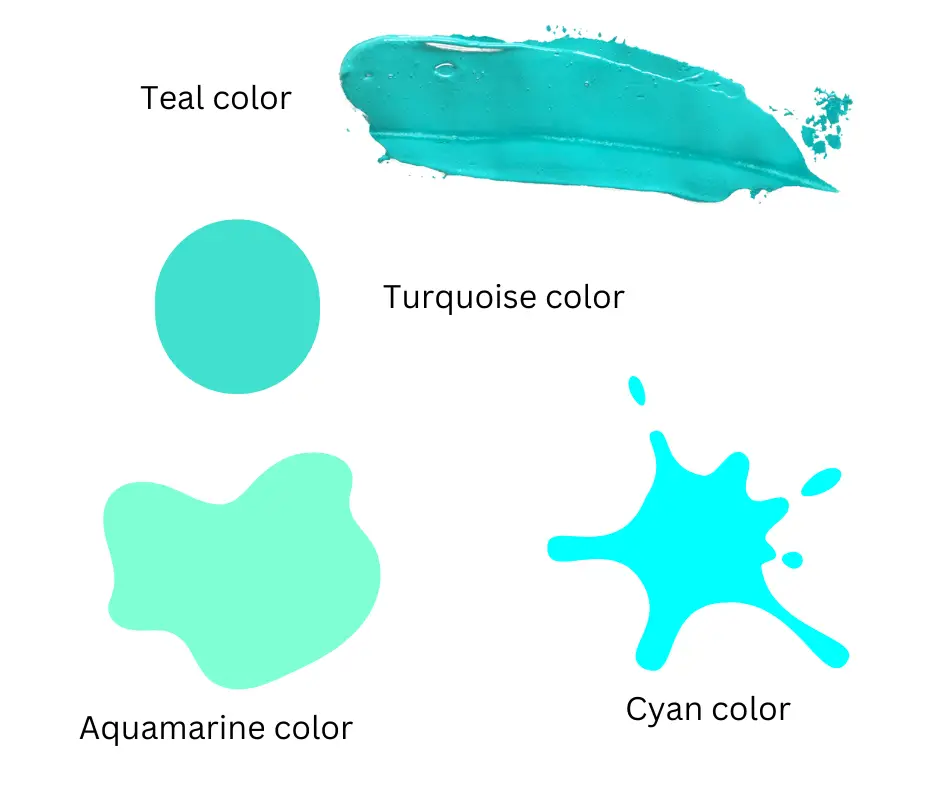Have you ever thought about what colors should be mixed to make turquoise? Turquoise is a color between green and blue. This color gives a natural and earthy look. So, making this color is not that easy because sometimes it is possible to create colors like cyan due to wrong mixtures.
Simply turquoise is made by mixing blue and green colors. If you do not have green, you can make turquoise by mixing blue and yellow too. Here, blue to green with a ratio of 2:1 or yellow to blue with a ratio of 1:5 should be mixed to make the turquoise color.
So, it is important to identify the exact amounts of each color to mix to make this earthy-looking turquoise. This article will explore more about mixing and creating shades of turquoise with the steps and guidelines.
The fundamental color combination to make turquoise (blue and green).
Turquoise is simply a blend of blue and green colors. Here, it is necessary to combine equal parts of blue and green to create the turquoise color. This color is so much associated with the beauty of nature. Blue inside this color provides coolness and depth, while green adds a simple, refreshing touch. So, a unique shade of turquoise is created. Moreover, you can experiment with different shades of blue and green colors to create this turquoise. So, a variation of colors can be made as the final output according to your preferences.

The amount of each color needed and the effect of the mixture.
When creating the color turquoise, it is essential to consider the amount to be mixed from each blue and green. First, mix equal amounts of blue and green paint. A deep color of turquoise will be created by adding more blue to the mixture. Moreover, if the ratio of green color is higher, a lighter and more vibrant tone of turquoise will be created. In addition, it is essential to mix the colors thoroughly to get a uniform blend. In addition, you can make green color by mixing lemon yellow with phthalo blue.
Making turquoise color with acrylic paint
How to mix the turquoise color with acrylic paint
Gather the materials
- Acrylic paint in blue and green (Here, mixing yellow with blue also will give the green color.)
- Palette or any other mixing surface
- Paintbrush or palette knife to mix and paint
- Water or acrylic medium (for thinning purposes)
- Paper towels or cloth for cleaning
Start with the base colors (blue and green)
Squeeze equal amounts of blue and green or blue and yellow paint onto your palette or mixing surface. Blue to green should be a ratio of 2:1 while yellow to blue should be a ratio of 1:5 for mixing. Decide the needed amount according to the quantity you want to make. But, it is good to start with a small drop of each color.
Mix the colors
Then, mix the blue and green or blue and yellow paint thoroughly using a paintbrush or palette knife. You can add small amounts of water or acrylic medium to thin the paint. It will ease the mixing process and make a smooth and consistent color.
Observe and adjust the color
Examine the color you have mixed. If the color has too much blue in it, add a small amount of green or yellow again and blend it. You can add a small amount of blue if the mixture has too much green in it. Continue the process until you get the color you need. Moreover, you can make the color light by adding a small amount of white, and adding black to the mixture will make your color dark.
Test and refine the mixed turquoise color
Do not just apply the color you made to your painting. It is important to test the color first by applying a small sample of the mixed turquoise color to a piece of paper or canvas. It will help to assess the accuracy of the color. Then, you can adjust the mixture as necessary to reach the desired color. Moreover, keep in mind to take note of the proportions and colors used for future usage.
Mixing Turquoise With Primary Colors
Mixing turquoise with blue, red, and yellow
Turquoise is commonly made by mixing blue and green. But we can also create a variation of turquoise using the primary colors blue, red, and yellow.
- First, squeeze a small amount of blue paint onto your palette or mixing surface. This will be the base for your turquoise mixture.
- Then, add a small amount of yellow paint to the blue. It will create a greenish undertone to get the desired turquoise hue. You can gradually increase the amount if needed.
- Now, you can add a small amount of red to the color mixture. Red can neutralize the greenish tone because it is the complementary color of green, and it will also contribute to the overall richness of the color. But do not add too much red because it will change the color of turquoise into purple.
- Finally, you can blend the colors until you get the consistent turquoise shade you want. You also can adjust adding colors according to your preferences. Here, keep in mind to mix well and observe the color closely during the process.
So, you can experiment and explore various shades of turquoise by using these colors according to your preferences.

Creating Variations: Light Turquoise, and Dark Turquoise
How to create light and dark turquoise by manipulating the amount of white or black added
In addition to blue and green, mixing white or black can create shades of turquoise. So, if you add white to this color mixture, the final turquoise color will be light and pastel-like. It also will give a more delicate look with a soft appearance. Moreover, adding black to the mixture will make the turquoise darker. So it will give a more subdued and deep shade. You can experiment by adding different amounts of white or black to the color mixture to expand the turquoise color palette.
Here is the way to create light turquoise. First, start with the base turquoise color and gradually add a small amount of white paint to it and mix well. Adding a bit of white produces different tints of turquoise color which are lighter versions of turquoise color. This will help to make a soft and more pastel-like shade. But do not try to add too much white because otherwise, it will lose the vibrancy and intensity of the color.
Here is the way to create dark turquoise. First, start with the base turquoise color. Then add small amounts of black paint into the mixture. Black will deepen your color and give you a more intense and rich shade of turquoise. These darker hues of turquoise color are also called shades. Keep in mind to add a very small amount of black because otherwise, it can very easily darken the color too much.
The Influence Of Blue And Green In Making Turquoise
The specific influence of blue and green in making turquoise.
Blue and green are the essential colors that create the wonderful color turquoise. Here, it is important to understand the specific influences of each color to make the shade of turquoise you want.
Blue – This significantly impacts the overall tone of the color. Blue brings depth, coolness, and a sense of calm to the color mixture. A variation of turquoise can be created by using a range of blue from light cyan to deep navy. It can make a soft and more pastel-like turquoise by mixing a lighter shade of blue color. Moreover, dark blue colors will give a rich and deep tone of turquoise.
Green – Green can add a dynamic element to the color turquoise. It also can bring vibrancy, freshness, and a touch of nature to the color mixture. This, too, significantly impacts the overall tone of the color as well as blue. If you use the green in a lighter shade, a brighter and more vibrant turquoise will be produced. It is the exact color of tropical water. Moreover, if the green is dark or blueish, the final color of turquoise will be earthy as turquoise gemstones.
How the shades of blue and green are used can influence the outcome.
As blue and green are used to make the color turquoise, the shades of blue and green directly influence the outcome. A variation of the outcome can be gained by experimenting with different shades of these two colors. Here, you can create a soft and delicate turquoise by using lighter shades of blue and green. This color will give a sense of dream and coolness. Moreover, if you use a darker shade of green and blue, a deep and bold turquoise color will be created. This color is mainly used for bold and striking designs. The reason is this dark color of turquoise can gain attention with its deep and captivating allure. As a result, artists and designers create unique and customized turquoise colors to suit their specific visions with various shades of blue and green.
How to make turquoise chocolate?
First, select high-quality food coloring or cocoa butter coloring in shades of blue and green. Use gel or powdered colors recommended for chocolates.
Then, melt white chocolate or white cocoa butter in a microwave. You can also double-boil the mixture until it becomes smooth and creamy.
Now, add a small amount of blue and green coloring to your melted chocolate. You can gradually increase the amount until creating the exact color of turquoise.
Next, mix the coloring well into the mixture.
Then, pour the mixture into molds and allow the chocolate to set completely before serving.

Related Colors: Teal, Aquamarine, and Cyan
How each of these colors is similar to and different from turquoise.

- Teal is a color in between blue and green. It is slightly more green. It is similar to turquoise by having a blue-green undertone. But teal has a more saturated and dark appearance compared to turquoise. Moreover, this color has a bold and more vibrant quality than turquoise.
- Aquamarine is a pale greenish-blue color that is lighter and softer than turquoise. It has the color of the clear waters of the sea. Aquamarine is typically on the lighter end of the spectrum of turquoise. This color has an ethereal charm associated with purity and clarity.
- Cyan is a bright and vivid blue-green color. It is more blue than green. This color is lighter and more intense than turquoise. Cyan has a cool shade of the color spectrum, while turquoise has a sense of balance and harmony.
How to create each color, emphasizing their relationship to turquoise.
Start with a base of blue and then gradually add green until the desired hue is achieved when creating teal. Mix the colors in the right balance to get the exact shade of teal.
To create aquamarine, start with a base of light blue and add a touch of green to it. Here, more blue color should be added than green to create the exact color.
Cyan can be created by combining equal parts of blue and green. Here, more blue-colored cyan will give a cooler nature, and greenish cyan will provide a warmer shade.
The Science of Color Mixing
Color mixing is simply combining different wavelengths of light. As a result, new colors are being made. Most of the beautiful colors are being made because of this wonderful science of color mixing.
The color wheel and the concept of primary, secondary, and tertiary colors.
Understanding the concept of the color wheel is very important to get a better idea of how colors mix and create new shades. There are primary, secondary, and tertiary colors consisting in the color wheel.

- Primary colors – Primary colors, red, blue, and yellow, are the foundation of all other colors. These colors cannot be made by mixing any different colors. So, the three of these colors are pure, and they cannot be derived from any other colors of the color wheel.
- Secondary colors – These colors are made by mixing equal parts of two primary colors. As an example, purple is made by mixing red and blue colors. Combining blue and yellow creates green, and orange color is made by mixing red and yellow. Moreover, secondary colors are located between the primary colors on the color wheel.
- Tertiary colors – These colors are made by mixing a primary color with an adjacent secondary color. For example, when blue and green colors are mixed, a bluish-green turquoise is created. So, these colors provide a wide range of hues with more color combinations.
How the mixture of colors works, focusing on the primary colors and their combinations.
Color mixing simply happens when different colors are combined to create new shades. This can happen according to the principles of additive and subtractive color mixing.
- Additive color mixing is a simple way to create new shades by mixing different waves of light. Here, the primary colors in additive mixing are red, green, and blue. So, a wide range of colors can be created by mixing each primary color together.
- Subtractive color mixing is another way to create colors. Here, wavelengths are removed from the visible light spectrum by using pigments and paint dyes. Cyan, magenta, and yellow are the primary colors in subtractive mixing. So, many different colors can be created here too.
Conclusion
Turquoise is a color between green and blue. It can create a refreshing and natural appearance. We can create different shades of turquoise by mixing blue and green in various proportions. Moreover, adding white to the mixture will lighten the turquoise, and black will make the color dark. You can experiment and explore various shades of turquoise by mixing different ratios of the basic colors according to your preferences. So, grab the chance and use your creativity to dive into the world of turquoise.

